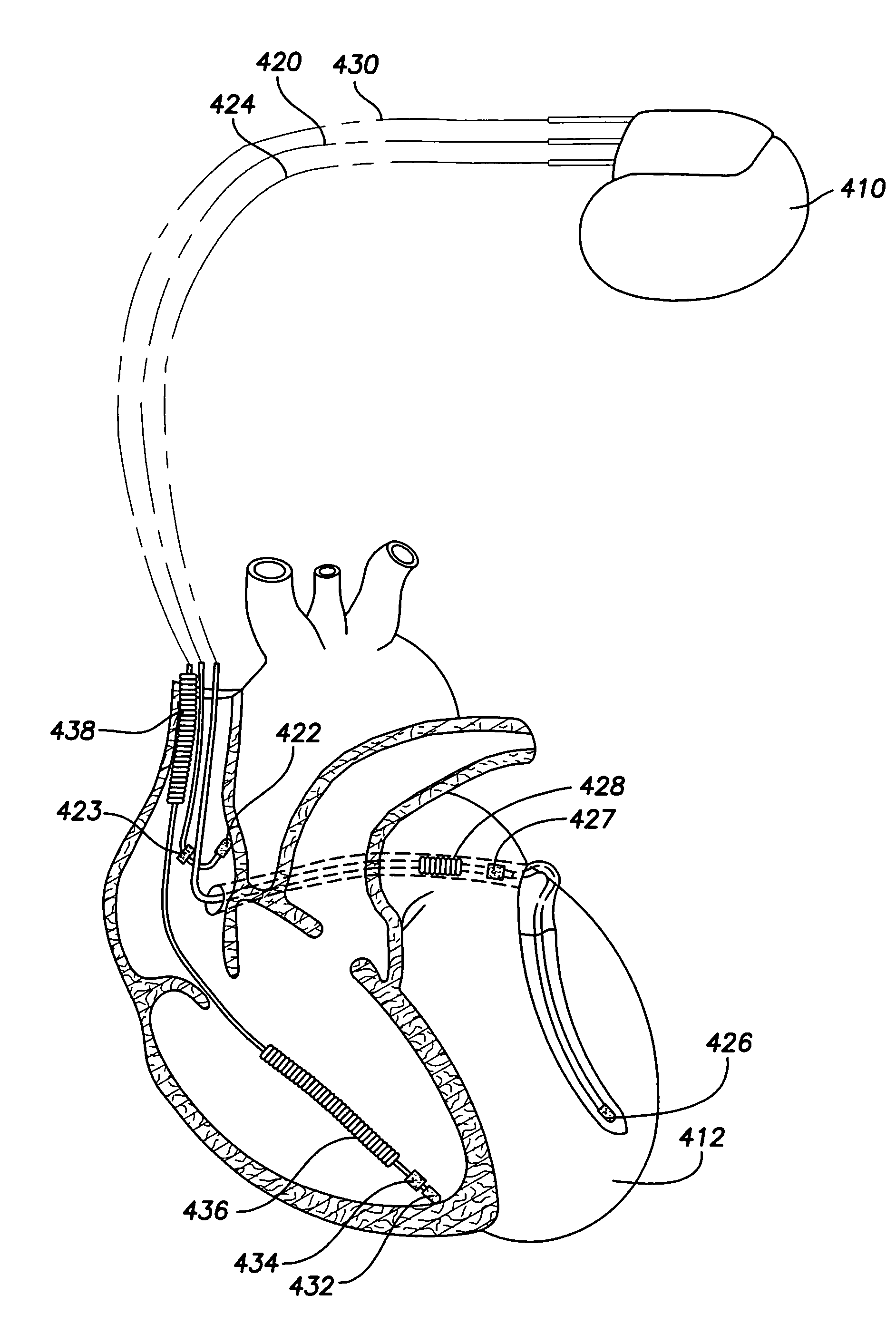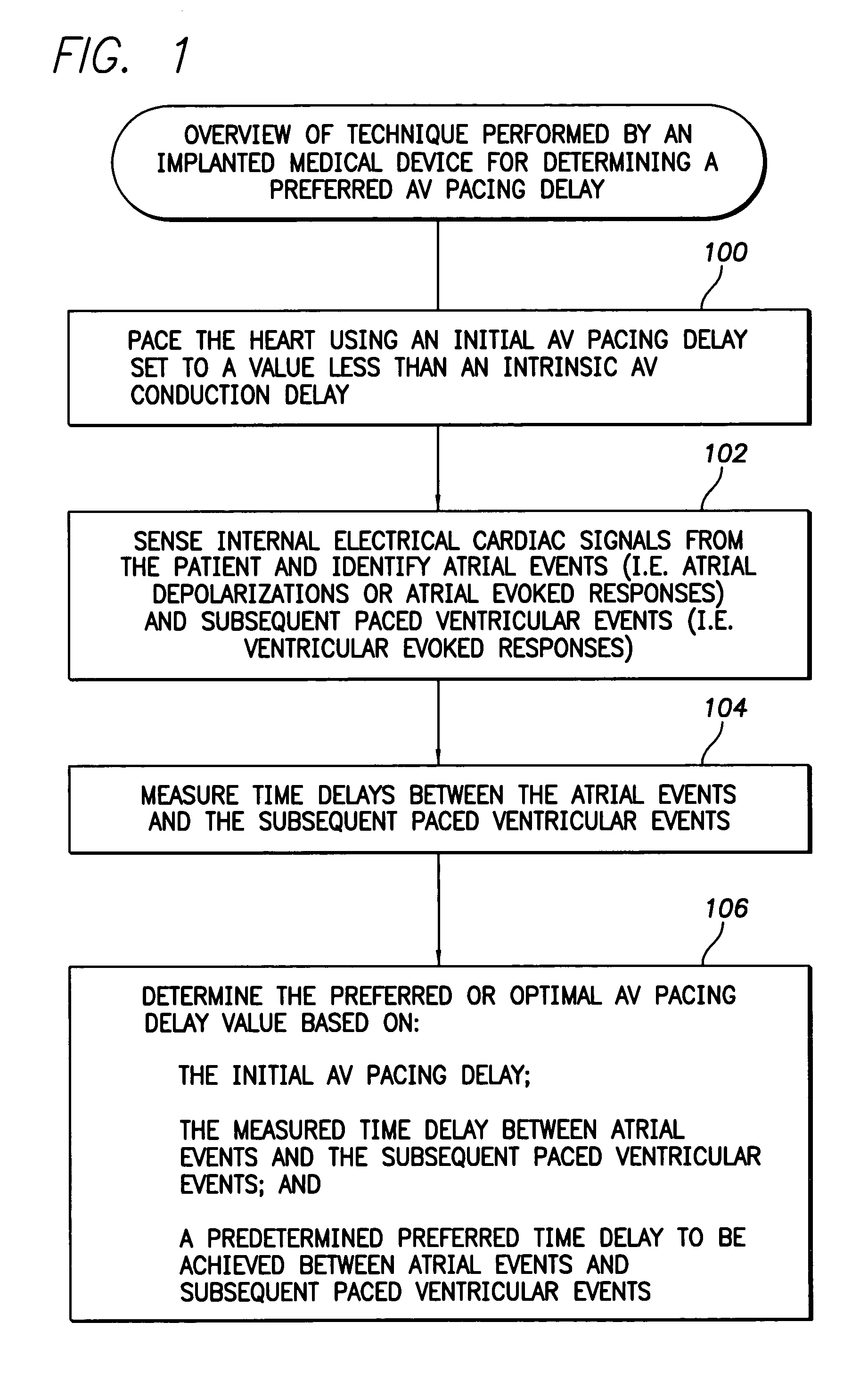System and method for determining preferred atrioventricular pacing delay values based on intracardiac electrogram signals
- Summary
- Abstract
- Description
- Claims
- Application Information
AI Technical Summary
Benefits of technology
Problems solved by technology
Method used
Image
Examples
Embodiment Construction
[0034]The following description includes the best mode presently contemplated for practicing the invention. This description is not to be taken in a limiting sense but is made merely to describe general principles of the invention. The scope of the invention should be ascertained with reference to the issued claims. In the description of the invention that follows, like numerals or reference designators will be used to refer to like parts or elements throughout.
[0035]Briefly, an overview of the AV pacing delay optimization techniques of invention will first be provided with reference to FIG. 1. Then, exemplary techniques requiring no initial calibration will be described with reference to FIGS. 2-5. Next, exemplary techniques that employ an initial calibration step performed by an external programmer using a surface EKG will be described with reference to FIGS. 6-8. Finally, details of an exemplary implantable medical device and an exemplary external programmer will be provided with...
PUM
 Login to View More
Login to View More Abstract
Description
Claims
Application Information
 Login to View More
Login to View More - R&D
- Intellectual Property
- Life Sciences
- Materials
- Tech Scout
- Unparalleled Data Quality
- Higher Quality Content
- 60% Fewer Hallucinations
Browse by: Latest US Patents, China's latest patents, Technical Efficacy Thesaurus, Application Domain, Technology Topic, Popular Technical Reports.
© 2025 PatSnap. All rights reserved.Legal|Privacy policy|Modern Slavery Act Transparency Statement|Sitemap|About US| Contact US: help@patsnap.com



